Remembering Duran Duran’s ‘The Wedding Album’ 25 years on
Duran Duran‘s The Wedding Album (technically, called Duran Duran of course) is 25 years old today. SDE would love to be telling you about an all-singing, all-dancing anniversary super deluxe edition, but… there isn’t one. As we know, Duran Duran don’t really like to release records anymore, whether new albums, reissues, singles, 12-inch remixes…etc. Touring is their thing. Putting aside the odd Record Store Day special, they’ve issued just one physical album in the last seven years, no reissues and no physical singles. That’s bordering on perverse.
But anyway, back to The Wedding Album. To fully appreciate the success of that record and the singles (Ordinary World in particular) you need to understand just how bad things were for the band beforehand and the depths from which they had to drag themselves up. I refer The Wedding Album’s predecessor, Liberty.
It’s hard to convey just how depressing the Liberty debacle (for that’s what it was) was for a Duran Duran fan like myself. The eighties had turned into the nineties and while 1988’s Big Thing had shown declining sales, the album was excellent; an artistic triumph and crucially, it still achieved top ten singles (different ones!) either side of the Atlantic and the band had consolidated their success in their first decade with a hits compilation called Decade – even releasing Burning The Ground a fairly creative ‘mashup’ single to promote it (which, strangely, wasn’t included on the compilation). In short, nothing looked too wrong, in the world of Duran Duran.
However, when the band returned in 1990 with a new album Liberty and newly anointed full band members Warren Cuccurullo and Sterling Campbell, it was nothing short of a disaster.
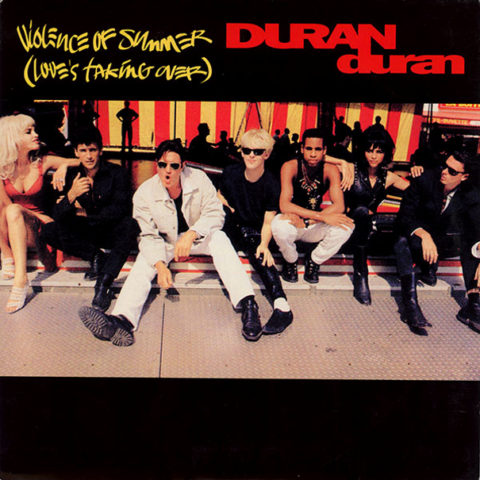
Violence Of Summer (Love’s Taking Over) was a terrible choice of lead single and this lumpen uninspired slice of pop-rock entered at number 23 in the UK charts, rose three places to number 20 the following week and then simply dropped out of the top 40 altogether, residing at number 54 after only four weeks. This was despite being issued on five formats in the UK, including a remix 12-inch, although the latter’s ‘Rock Mix’ and ‘The Dub: Sounds of a Powerful Mix’ surgically removed the any redeeming qualities of the original song (not too many in the first place) with Le Bon ‘speaking’ the vocal lines in rather embarrassing fashion. The only hint of the sophisticated DD of old was the B-side Throb (which turned out to be an instrumental derived from the best track on Liberty, My Antartica).
Somehow Liberty managed to enter the UK chart at number eight when issued in late August of 1990 (Prince‘s Graffiti Bridge was in at number one, on the same week) but it dropped to 49 only three weeks later, never to be heard of again.
Worse was to come, because painful though it was (no pun intended) Violence of Summer deserved to be a flop, but follow-up Serious, issued in October really didn’t. No one outside of hardcore Duran Duran fans even knew the single was out. The album had disappeared from the charts, the band weren’t touring, and the 45 had no chance of even getting a mention on the chart rundown on Sunday because it stalled at number 48 – the first time Duran Duran hadn’t had reached the top 40 with a single release. You had to go all the way back to 1981 and Careless Memories to get anything that was even close (that peaked at 37). I remember buying the CD single at the time. Oh well (I thought) at least I get to enjoy a remix of album track All Along The Water, called ‘Water Babies’ which was a bonus track. Except I didn’t because they’d accidentally just put the standard album track on the CD. The third single was cancelled and one imagines there was some serious navel-gazing and probably some stern words, maybe even ultimatums from the record company. Referring to Liberty, Nick Rhodes admitted a few years back that “If at any point in our career I felt that we were struggling to find a direction, that would be it.”
So Duran Duran retreated, probably with their tails between their legs, and it all went a bit quiet for a number of years. Fans like myself had some interesting ‘titbits’ to buy, in the meantime, such as the Japanese ‘Pastmasters’ reissue of Arcadia’s So Red The Rose (issued in late 1990), which although it didn’t include any bonus tracks, represented the first time the 1985 album had been issued on CD. There was also a rather good untitled two-CD Duran Duran compilation (another Japanese-only release) – which collected all four Japanese remix EPs, namely Nite Romantics, Carnival, Tiger Tiger and Strange Behavior. But as grunge started to spread from West Coast America and the beginnings of Britpop stirred in the UK, some fans started to wonder if there was a place for Duran Duran in the pop charts of the 1990s? Will the 1990s be a depressing wilderness for the outfit that ruled the airwaves and MTV in the early 1980s? They were once the biggest band in the world, but maybe Duran Duran were now a spent force?
Wedding planning
The band, to their credit, were going to put things right, it’s no exaggeration to say that their career depended on it. They’d holed up in Battersea to record in Warren Cucurullo’s home studio (known as ‘Privacy’) with co-producer John Jones. Sterling Campbell had gone and it was a back-to-basics approach; knuckling down to some good old fashioned songwriting.
In some magazine or other around 1991 or 1992, John Taylor’s then wife (and one-time The Word presenter) Amanda De Cadenet was asked what she was listening to or what her favourite song was and she answered that it was an unreleased Duran Duran song called Ordinary World. Interesting…
That single was officially released in the UK in late January 1993, but had actually been put out a month early in the USA due to ‘public demand’, after it got a massive amount of airplay thanks to the song being leaked to radio a few months earlier.
I remember very clearly the excitement because I used to frequent a record shop in Fulham in London that was one of those places that was off the beaten track and – I think – run by some blokes in the industry. Therefore you’d regularly find all sorts of promos and pre-release copies of singles. Pre-internet, pre-social media, it was incredibly exciting to find something that ‘wasn’t out yet’ and that’s exactly what happened with Ordinary World. I came across a copy of ‘CD 2’ of the single at least a couple of weeks before the official release! I could barely contain my joy although as I paid some relatively small amount for the item, the guy behind the counter was all very nonchalant and seemed to not understand THE SIGNIFICANCE OF THE TRANSACTION.
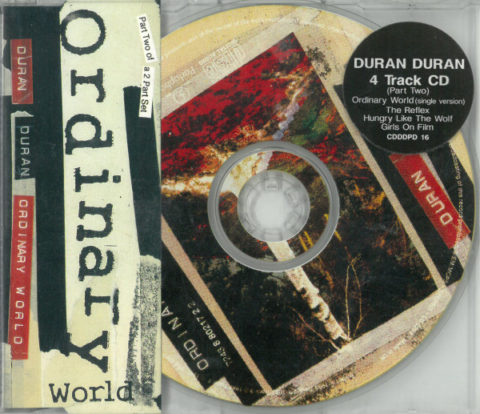
I’m trying to remember whether I’d even heard the song at all at this point. I think I had, via UK radio or even something like Casey Kasem doing his run down on a late night showing of his American Top 40.
But hey, hearing bits the song on radio or TV was one thing, but this was an official CD pressing that I could play on my NAD CD player. Yes, I was only 23 but I was already taking my music seriously!
The song sounded immense, epic, lush, emotional; in short a CLASSIC. It had a lyric with meaning, a melody that soared. Gone was the digital brashness and emptiness of most of Liberty – here was acoustic guitars, elegant strings, understatement and a memorable melody. Me and my friend Aubrey obsessed over the song. I think the phrase “fucking brilliant” was used quite often. Even the artwork was cool… hinting at ecology and with a groovy ‘cut and paste’ sticky tape vibe. A big improvement over the narcissistic look-at-us-hanging-out-at-the-fun-fair-with-beautiful-women Liberty promo shots. Incroyable, indeed.
Although in early 1993 we were edging towards an the era where Radio One would start to reject mainstream and heritage pop artists – and redefine their public service remit as one which decreed they had to play more ‘new acts’ leaving the mainstream fair to commercial radio – we weren’t there yet. This is a crucial point, because it meant we were still living in a world where if you wrote and recorded a ‘good song’, bands like Duran Duran still had the chance of having a hit. These days if Duran Duran come up with a corker, it won’t get played because… well, they’re Duran Duran.
Anyway… for the next few weeks it was operation ‘what’s-the-news-on-Ordinary-World?’ Any TV show that might play the video or feature the band was watched/recorded. Any radio airplay, noted and discussed. It was looking good. There was a definite ‘buzz’.
And then it happened. As a fan of pop music you get used to disappointment. Favourite 45s underperform. Record labels choose the ‘wrong’ single. But after the fiasco of Liberty where virtually every decision looked WRONG instead of right, suddenly everything was spot on. Ordinary World was undoubtedly the correct lead single for a ‘comeback’, holding it back for a follow up to something else would have been a reckless move – the stakes were too high. EMI was not messing around. There were no remixes; no arty B-sides. Between them, the two UK CD singles delivered classic hits as extra tracks, including The Reflex, Hungry Like The Wolf, Girls On Film, Save A Prayer and Skin Trade. The video (courtesy of Nick Egan) was excellent – cinematic, expensive looking but also elegant and restrained. Simon’s hair looked cool. Warren still had hair. Basically, the box marked ‘hair’ got a big tick. If it all went pair shaped, no one could claim they hadn’t given it their best shot.
Ordinary World entered the UK charts at number 11.
Immediately, straight off the bat, it was the band’s second biggest hit since Notorious in 1986 but then in the second week the song rose to number six, eclipsing No-No-Notorious (which peaked at number seven). A View To A Kill from ’85 became the last single that performed better (still the most successful Bond single, fact fans), and before that it was their ‘imperial’ phase. Not even Simon choosing to sing live on Top Of The Pops and EMI opting not to release Ordinary World on 12-inch vinyl (a Duran first) could spoil the party.
It felt like there was no limit to what this song could achieve and the success it could enjoy… but surprisingly it held at number six in the following week and then dropped to number nine a week later. The only, a-hem, ‘no limit’ evident was 2 Unlimited who were in the middle of a five week run at number one. It would have been churlish to have been too disappointed, but the song definitely felt like it was a potential number one. The silver lining was that thanks to the early release in the USA, where singles climb sloth-like up the charts, Ordinary World was in the top ten on both sides of the Atlantic AT THE SAME TIME. That’s proper old school, big hit single success. And while it didn’t quite make it to the top spot in America either (peaked at number three) the song was like a shot of adrenaline into the heart of Duran Duran. They were BACK and even people who had always thought they were wankers, had to grudgingly admit that Ordinary World was a ‘decent’ song (it would go on to win an Ivor Novello award).
But much like in tennis where commentators and pundits like to remind us that ‘you haven’t broken serve until you’ve held the next game’ Duran Duran were going to need another great single to keep the momentum going. Could they serve a second big hit? Would it be an ace? Were their ‘new balls’ going to maintain their bounce. Is this tennis analogy ever going to end? The album was about to be released and it would be time to find out if it was any good and play ‘guess the second single’.
But let’s talk about the album. In theme of getting all the decisions right the cover was excellent. No contemporary images of the band just a collage of vintage wedding shots of band members parents – hence ‘The Wedding Album’.
The Magnificent Seven
It’s a 13-track album which I think is too long, to be honest, but this was the CD era and the tendency was to try and fill the CD to give value. Taking a dispassionate look at it, I think there’s seven songs on The Wedding Album that range from pretty good to superb. They are as follows: Too Much Information, Ordinary World, Love Voodoo, Come Undone, Breath After Breath, U.M.F., and None of the Above. Seven tracks out of 13 doesn’t sound like a classic, but it’s not an exaggeration to claim that any of those tracks could have been singles. Land and Palomino from Big Thing were great songs, but didn’t really have mainstream appeal beyond the band’s hardcore fanbase. In other words, even once you got beyond the singles The Wedding Album offered lots to enjoy to non-DD fans. In short, it crossed over.
TOO MUCH INFORMATION is decent enough although I’d rank it as my least favourite of the seven tracks listed above; it scrapes in, basically. It’s obviously a powerful uptempo number and has a lyric of conviction but it’s a little too rocky; designed with an eye for the road, perhaps? Duran Duran aren’t a rock band. I don’t know when this song was written, but it wouldn’t surprise me if it was early on when they hadn’t quite washed Liberty out of their system – it does have that feel to it. It’s rather charmless, so choosing this song as the third single after Ordinary World and Come Undone was a big mistake. The first mistake in what was, until that point, a flawless campaign.
ORDINARY WORLD has been covered in detail above, although I will add that the single mix is far better than the album version. If you are wondering what the difference is, the single mix starts with the acoustic guitar riff, whereas the album version brings in some strings first. Then the single mix has an electric guitar solo at 2.39, whereas the album version replaces it with acoustic guitar (around the 2.52 point). The acoustic guitar sounds great at the beginning of the song, but in the middle the electric is better. One of the best ‘bits’ in the single version is the build up to a final triumphant chorus after the line “ours is just a little sorrowed talk…” but criminally, the album version doesn’t have the vocal chorus, it segues into the electric guitar solo that features at 2.52 in the single mix. Okay, the chorus happens again after the solo, but it’s not half as tight and powerful as the single mix. It’s funny, because that CD single I picked up early was ‘CD 2’, which did indeed feature the single mix. However, CD 1 was the disc that was issued on the day the single came out in the UK and that version had the album mix. I could never understand that. Fans had to wait a further week to pick up ‘my’ CD 2 with the mix they would have been hearing on the radio. It’s a wonderful song, but structurally, the album version to me always feels a little flabbier than the lean and keen 45 mix which really goes for the jugular.
LOVE VOODOO is a slinky, dubby delight, with some great keyboard flourishes from Nick. The song has a seductive melody and Simon seemed to get his singing tone just right. This is an important point and applies to much (although not all) of the album. With Liberty Simon adopted a rather shouty, rocky edge to his vocal performance… almost ‘over singing’ them at times, but not here. Also, I don’t know if someone ‘had a word’ with Warren, but his ‘LA rawk’ setting on electric guitar was largely binned and Love Voodoo benefits from a lovely sparing acoustic guitar figure at 1.39. This lightness of touch does a great service to the song.
U.M.F. sounds like it could be awful for the first 40 seconds. Simon is guilty of his ‘speaky’ vocals and to be frank it’s not looking good, but then when the break happens at 40 seconds in, with the ‘Take it from me…’ line (ending with ‘such a wonderful person’) the song goes up to a whole other level… and we haven’t even got to the chorus yet. It has a genuinely witty lyric and just loads of great elements; the parping horns, the whistling, the ‘oooh oooh’ backing vocals. Three minutes in and there appears to be more inventiveness and creativity in U.M.F. than in the whole of the Liberty album. After four and a half minutes they could have faded out, but what the hell, let’s throw in a cool outro section! U.M.F. has wit, charm, melody and a great arrangement. Somehow, Simon gets away with a lyric with the line “I’m making love to the ultimate mind”!
NONE OF THE ABOVE was a single in Japan and really could have (should have?) been a single in the UK. It follows Nile Rodger’s Chic ‘rulebook’ and starts with the chorus (accapella). Like U.M.F. the name of the game here is melody and a great arrangement. The verse melody is fantastic and Simon’s singing is superb. It really is famine to feast when you compare Liberty with The Wedding Album, in terms of melody. None of the Above has the great verses.. (“There was a time…”) an blistering break (“Can’t take this attitude…”) and then a cracking chorus (“I am I myself alone…”). Nothing feels forced in this song, all the different elements fit together like a glove and and it’s another thoughtful lyric from Simon. Warren does let loose a bit at the three minute mark, but the song can take it and in fact the guitar is wonderful at the end section at around the 3.56 mark.
Come Undone stands head and shoulders above everything else on the album, with the exception of Ordinary World. It’s a stunning piece of work with that ‘liquid’ guitar figure intro. Simon’s vocals are as good as anything he’s ever delivered and like the all the best songs on The Wedding Album it has a great lyric married to a brilliant melody. But the quality of the production shouldn’t be underestimated. The song just sounds so good. As soon as I bought the album (on the first day it came out, of course) I couldn’t stop playing Come Undone. Obviously this ended up being the second single, but I remember fretting that some fool would try to be too clever and not release it. However, even the most inept record company marketing person could not fail to see that single number two chose itself. Ordinary World announced to the world that Duran Duran were BACK, and Come Undone said ‘we’re not going anywhere’. It beggars belief that this single wasn’t a top ten hit in the UK (it peaked at number 13) but in America at least Duran Duran did have had another top ten single. The success of Come Undone sent The Wedding Album back up the charts all around the world.
Breath After Breath is the most unusual song on The Wedding Album. This collaboration with Brazilian singer-songwriter Milton Nascimento was a commercial enough prospect for a video to be made, and for a while there were hints that this might be chosen as a fourth single, but that never happened.
So they are the magnificent seven, but what about the other six tracks?
Drowning Man is a housey, trancey number that is simple not very good. It did actually get a limited standalone 12-inch vinyl release in America (there was a UK 12-inch promo too) but honestly, why wasn’t this left off of The Wedding Album and relegated to B-side status? Not only is it a terrible song but it’s so discordant and not in keeping with most of the album. And it comes early on – it’s the fourth track!
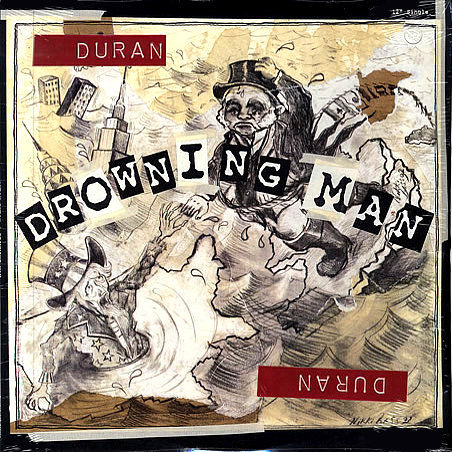
Shotgun isn’t really a ‘song’, more of a short 55 second segue. It’s fine, but why bother? They could have simply tacked it on to the end of something else instead of giving it full track status. When The Wedding Album first entered the UK charts, on the Radio One album chart show, they played Shotgun to an audience who had at that point only heard Ordinary World. I remember being very annoyed by that, given how many other good songs were on the album. I’m sure the radio producer thought ‘it’s short, let’s go with Shotgun‘.
Femme Fatale is of course a cover of the Velvet Underground song. This recording represents something of a premonition really, because although we didn’t know it at the time, the much derided (although actually not that bad) covers album Thank You would be the next studio outing. This song being on the album does seem totally pointless. It’s pleasant enough, but really adds nothing.
Shelter / To Whom It May Concern / Sin Of The City
I’m grouping these together because there’s something about the last three tracks of The Wedding Album. They are very much album tracks in the sense that you could never imagine any of them being singles and they all share the same kind of tone and production. It’s as if the new found songwriting discipline and ‘craft’ that makes ‘the magnificent seven’ so good was thoroughly depleted and a bit of laziness crept back. Shelter is a kind of heavy-footed funk workout while To Whom It May Concern has a similar sound and is a chanty protest about ‘some people’ and ‘Mr Bones’ (Nick wrote the lyrics to this song). It’s all a bit messy and not of the highest quality. Only Sin Of The City has any kind of emotional centre, retelling the story of a tragedy, although even that’s not really enough to redeem it. Simon reverts to his ‘speaky’ vocals for the verses – it’s not great and drags on for ages. That fact that for this article I had to listen to all three of these songs again to ‘remember how they go’ tells you everything you need to know really. Back in the day, I do remember regularly ‘not bothering’ to listen to the end of the album fairly regularly!
The Wedding Album entered the UK album chart at number four in mid February of 1993. In the same week Annie Lennox‘s Diva and R.E.M.’s Automatic For The People were ahead of it. As was East 17’s Walthamstow which was released on the same day and entered the UK album chart at number one. But while R.E.M. and Annie Lennox hung around the top ten for quite a few weeks after, Duran Duran dropped out the very next week and continued to drop. It looked like a familiar story in many ways, and at the end of March ’93 when Come Undone was released the album was only just in the top 40. But the quality of that second single really did the trick and for the first time in what seemed like an eternity Duran Duran had an album that climbed back up the charts. Over five weeks the album rose to number five, just one place short of its peak position. It then stayed in the top ten for three weeks before slowly dropping out again.
The album was also a top ten hit in America and undoubtedly viewed by fans, band and record company as a big success. I think it’s this aspect and the career rejuvenation that we celebrate 25 years later, along with two hit singles that genuinely sit shoulder to shoulder with the band’s best work. In truth, as examined in some detail above, The Wedding Album isn’t a ‘classic’ album in the way that we might view the aforementioned Automatic For The People. There are too many average songs on it, but with some small adjustments it could have been so much better. A nine-track album – the ‘magnificent seven’ and maybe Femme Fatale and Sin of the City would have been much easier to digest. None of three B-sides of this era – Falling Angel, Time For Temptation and Stop Dead – are classics, although I’m aware that many fans have a lot of time for Falling Angel. Bizarrely, EMI didn’t put out any of these non-album tracks on UK singles – they didn’t emerge in Britain until the songs featured on the two-CD special edition of The Wedding Album which was issued in late ’93.
EMI/Capitol did a lot of things right for The Wedding Album campaign and the stood by the band despite the Liberty debacle, but post Come Undone they came up short for a number of reasons. They chose the wrong third single (or allowed the band to dictate the choice). None of the Above should have been single number three. Also, they only released three singles. Why? Annie Lennox’s Diva had five singles pulled from it, R.E.M’s Automatic For The People six, so there seemed no logic in stopping. More singles would have extended the chart life and interest in the album. Against all the odds, Duran Duran were HOT PROPERTY once more, but the record company seemed to just give up when Too Much Information stalled at number 35 in the UK. I think the band deserved another chance to have a third hit from a fourth single, but that opportunity was denied.
Ultimately, this Wedding would end in a sad and messy divorce. The label apparently stood by and watched Duran Duran throw all their new found success and credibility in a dumper by allowing them to issue the ill-advised covers album, Thank You. Wrong album at the wrong time. Simon, Nick, John, and Warren really needed to consolidate and deliver another strong studio album of self-penned material, with attendant hit singles. That never happened. When they finally did do this, EMI would ultimately refuse to issue Medazzaland, the band’s ninth studio album, in the UK. The relationship with the label was over. In four short years it had all fallen apart and John Taylor was no longer even in the band. If commercial resurrection seemed unlikely after Liberty, it seemed almost unthinkable as we moved towards a new millennium. But this roller coaster ride was destined to continue… and more surprises were on the way. But that’s another story.
Duran Duran aka The Wedding Album was issued 25 years ago today. Leave a comment with your thoughts on the album and this era.

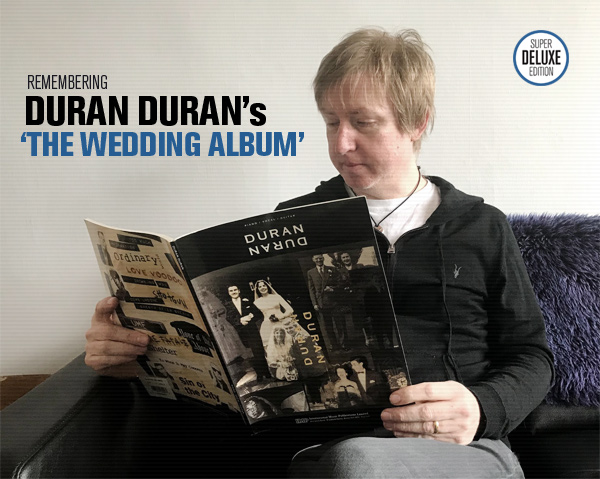

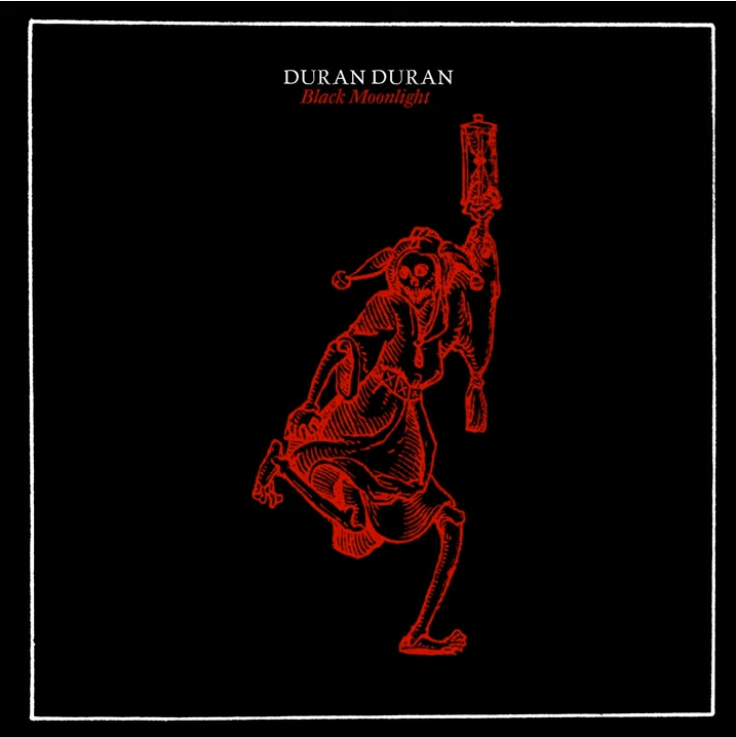
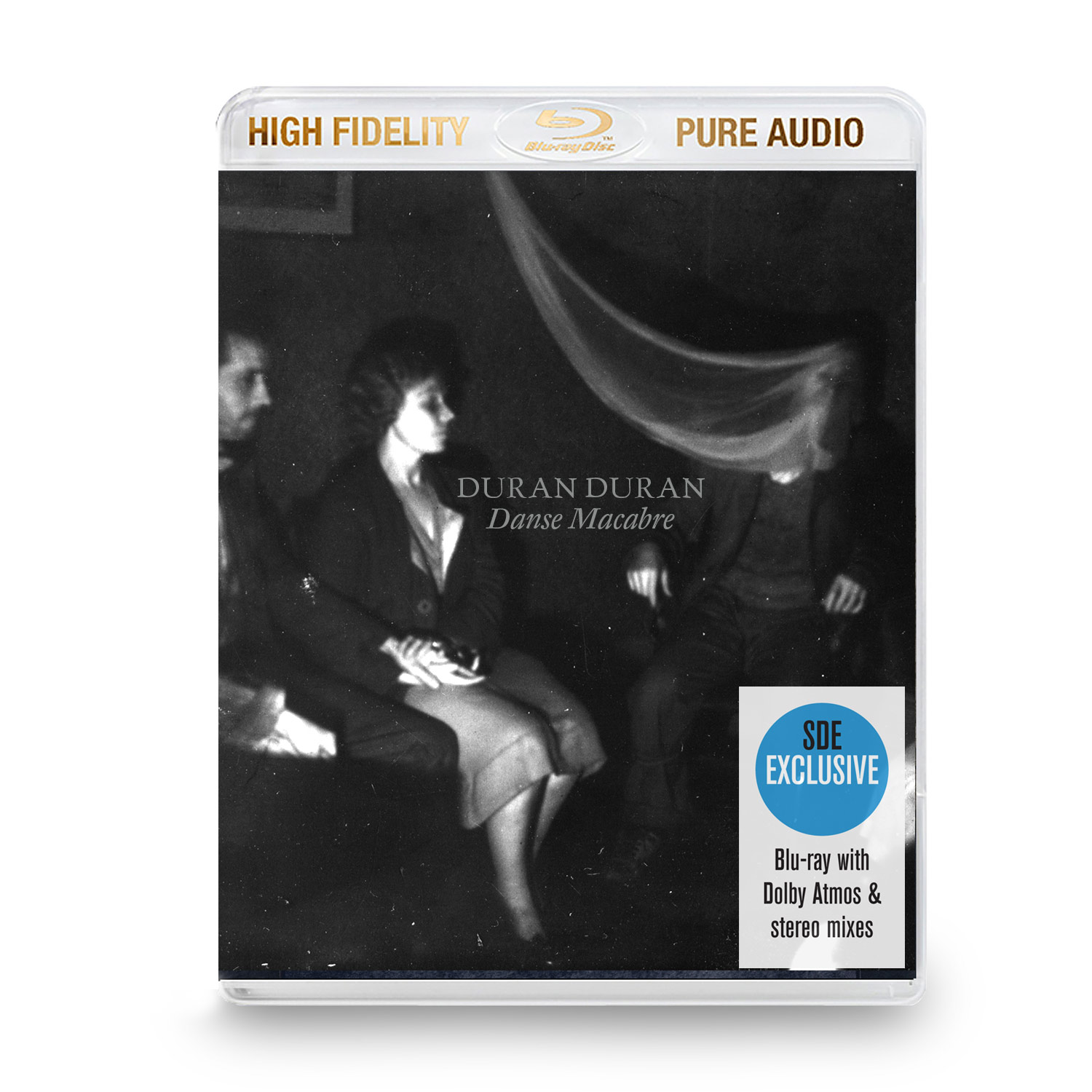
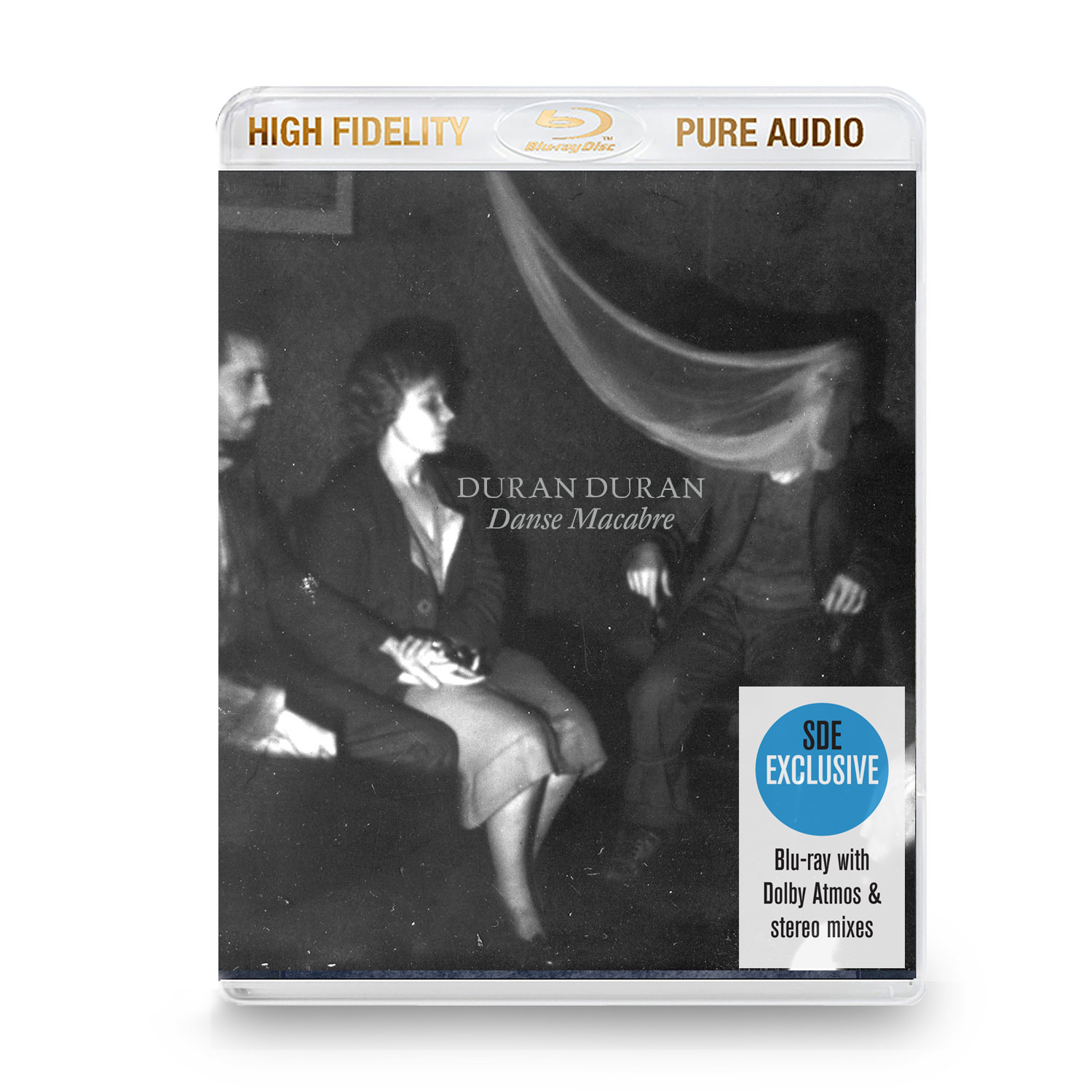
By Paul Sinclair
140